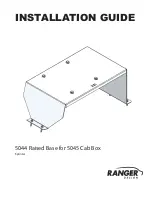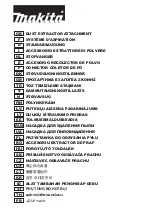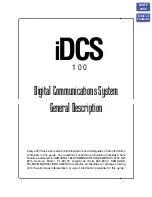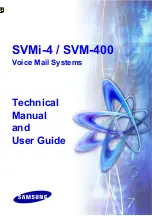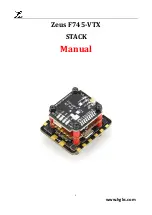
A cyclist symbol appears to the left of the
speed. The wheel turns forward to
indicate acceleration. The wheel turns
backward to indicate deceleration.
TRIPMETER (DST)
(Trip Information Reset Mode)
It is used to remind you for the parts replacement or to lubricate
the chains and wheels after the peset distance is reached.
Right after KM/ MILE selection, the preset total distance of
600km (or miles) will flash, press the RIGHT button to select
between 200, 400, 600 & 800km (or miles) and press LEFT
button to confirm.
For example, if 600 km is selected, the spanner ( ) will flash
whenever the total distance (ODO) reach 600, 1200, 1800km
(or miles).
Press the LEFT button to stop flashing of spanner( ).
START / STOP
Art No.: BC-P3-GB
FUNCTIONS
ATTENTION: Computer Functions refer to the packing details.
FEATURES
MAINTENANCE PROGRAM
CLOCK
(12H / 24H)
MAXIMUM SPEED (MXS)
AVERAGE SPEED (AVS)
TRIP TIMER (TM)
TEMPERATURE
ODOMETER SAVE FUNCTION
MALFUNCTION
PROBLEM
SCAN
FREEZE FRAME MEMORY
ODOMETER (ODO)
SPEED COMPARATOR
(Cadence)
SPEED TENDENCY
(Acceleration & Deceleration)
SPEEDOMETER (SPD)
WHEEL SIZE INPUT
KM / MILE SELECTION
4 5 7 9 13 16
Speedometer (SPD)
- 0~99.9 KM/hr or M/hr
Tripmeter (DST)
- 0~999.9 KM or M
Odometer (ODO)
- 0~9999.9 KM or M
Auto Trip Timer (TM)
- 9: 59’ 59”
Maximum Speed (MXS)
- 0~99.9 KM/hr or M/hr
Average Speed (AVS)
- 0~99.9 KM/hr or M/hr
Scan
- for DST, MXS, AVS, TM
Freeze Frame Memory
- for TM, AVS, DST
Speed Comparator
- (+ or -)
Speed Tendency or
Digital Clock
12 / 24 hour selectable
Temperature
(-10°C to +50°C)
°C / °F Selection
Odometer Save Function
Maintenance Program
INSTRUCTION MANUAL
CYCLE COMPUTER
Fig. 2
COMPUTER
EL BACKLIGHT (OPTIONAL)
*EL BACKLIGHT (OPTIONAL)
Slide the computer onto the mounting bracket until it snaps
firmly into position. Press the release button to take out the
computer as shown in Fig. 1.
After the wheel size input, the following function is selection of
kilometers or miles as the measurement for distance. Press the
RIGHT button to choose between kilometer (KM) and Mile (M),
press the LEFT button to confirm.
To start the unit, press the RIGHT button to turn on the display
and the wireless mounting system. To stop the unit, left unused
for over 5-6 minutes and then the computer will automatically
switch off to preserve batteries.
A “+” or “-” sign appears to the right of the
speed. “+” indicates you are travelling
faster than your average speed (AVS). A
“-” indicates you are riding slower than your
average speed.
Total distance travelled is indicated by
ODO and display on the bottom line. To
reset ODO, press and hold LEFT and
RIGHT buttons for 2 seconds or remove
the battery. Press the RIGHT button to
enter DST mode.
Trip distance measurement is indicated by
DST and is displayed on the bottom line.
Tripmeter is activated automatically with
speedometer input. Reset DST to zero by
pressing the LEFT button for 2 seconds;
DST (Trip distance), TM (Trip Timer) & AVS
(Average Speed) will also be reset at that
time. Press the RIGHT button to enter
MXS mode.
Maximum speed measurement is indicated
by MXS and is displayed on the bottom
line. Maximum speed is stored in memory
and updated only when a higher speed is
reached. To reset MXS, press and hold the
RIGHT button to enter AVS mode.
Press and hold LEFT button for 2 seconds,
” °C ” will start to flash. Press RIGHT
button to select “ °C” or “ °F” and press
LEFT button to confirm.
Press RIGHT button to enter the Scan
mode.
The EL backlight can be turned on either as follows:
1) Holding the RIGHT button for 2 seconds, the EL light will be
turned on for 8 seconds and the computer will then go to fast
scan mode with trip distance, maximum speed, average
speed and trip timer displayed once.
2) Press once on the LEFT Button, the EL light will be turned
on for 4 seconds and the comuter will go to the freeze frame
menory mode as well.
Inaccurate maximum
speed reading
No speedometer
reading
Slow display
response
Black display
No trip distance
reading alignment
Display shows
irregular figures
Unknown atmospheric or RF
interference
Improper magnet/transmitter
alignment
Check battery and correct
installation
Temperature outside of operating
limits (0-55 °C)
Temperature too hot, or display
exposed to direct sunlight too long
Check correct transmitter / magnet
Check battery and correct
installation
Take out computer battery and
install again
The Scan mode allows DST, MXS, AVS
and TM to cycle on the screen without
pressing any keys. Press the RIGHT
button to enter the Clock mode.
Press the LEFT button, Freeze Frame
Memory can lock the display at the end of a
ride segment and information TM, DST and
AVS which will be flashing, can be read at a
later time by pressing the RIGHT button.
To release the memory, press the LEFT
button until the display digit is static again.
This is particularly useful when crossing
the finish line of a time trial, since the TM
cannot be stopped manually.
The SAVE function allows you to keep the
important data of total distance (ODO)
even after replacement of battery.
To set ODO, after battery replacement and
wheel size setting, press RIGHT button to
ODO mode and then press and hold LEFT
button for 2 seconds until the last digit
flickering. To adjust number, press the
RIGHT button. Press the LEFT button to
confirm. Repeat above sequence to reach
the desired odometer value. Press the
LEFT button again to return to normal ODO
mode.
Average Speed measurment is indicated
by AVS and is displayed on the bottom line.
AVS is calculated with the Trip Timer (TM),
so AVS is the average speed only while
riding. Press the RIGHT button to enter TM
mode.
Trip timer measurement is indicated by TM
and is displayed on the bottom line. Trip
Timer is activated automatically with
speedometer input [On when you ride and
off when you stop.] It records only the time
spent actually riding.
Reset TM to zero by pressing the LEFT
button for 2 seconds in DST mode. Press
the RIGHT button to enter Temperature
mode.
A 12 or 24-hour digital clock is indicated by
the flickering colon on the bottom line. To
switch between the 12 and 24 hour format
or to adjust time, press the LEFT button for
2 seconds. “24H” will start to flicker. Use
the RIGHT button to select “12H” for12-
hour format or “24H” for 24-hour format.
Press the LEFT button to confirm. Next the
hour digits will start to flicker. Use the
RIGHT button to select the hour. To change
minutes, press LEFT button again. The
minutes will start to flicker. Use the RIGHT
button to select the minutes. Press the
LEFT button once more to return to
CLOCK Mode. Press the RIGHT button to
enter ODO mode.
Instantaneous Speed is indicated on the
top line. The range of measurement is
from 0 to 99 KM/ hr [0 to 99 M/ hr] and
accuracy is ± 0.5 KM/ hr [M/ hr].
Press and hold LEFT and RIGHT buttons for 2 seconds or after
the replacement of battery, the unit is switched to wheel size
input mode. Multiply wheel diameter, d (Fig. 2) in millimeters by
3.1416 to determine wheel factor, c.
Press the LEFT button to select digit to be input and the RIGHT
button to adjust the digit to the desired number (hold for fast
advance). Press the LEFT button again to KM/MILE selection.
(Note: removing battery will erase Wheel Size Input)
distance in millimeter
per one turn
For convenience you can refer to the chart of wheel diameter
size factor inputs.
ATTENTION !! Refer to the appendix for installation reference.
Release
Fig. 1


